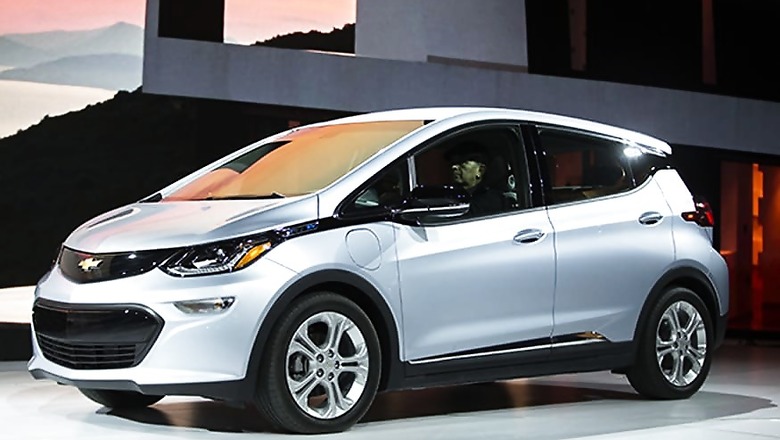
views
The expansive exhibit floor of the Detroit auto show is full of the latest offerings from car companies hoping to woo American consumers. But can you tell one from another?
Sure, there are luxury vehicles from brands such as BMW, Alpha Romeo, Mercedes and Cadillac, unreachable for most consumers.
And then there are the designer cars from brands like start-up VLF, and even Volkswagen with its futuristic reimagining of its beloved minibus, electrified and automated.
But aside from the most unusual and expensive, many of the models was showcased were -- to put it mildly -- hard to distinguish from one another.
As American preferences continue to shift from small, economy sedans to bulkier crossovers, SUVs and trucks, car shapes and looks appear increasingly familiar, even as auto makers endeavor to stand out with distinguishing touches.
Even the Chevrolet Bolt -- GM's new fully-electric offering which won the North American Car of the Year award at the auto show -- is strongly reminiscent of a Honda Fit, which looks a lot like a Toyota Prius.
"There's only so many ways you can shape an egg," said Steve Moskowitz, who for more than three decades ran a dealership selling Oldsmobile cars.
"You can't build a car that's so wildly different, and away from a shape that's going to give you an aerodynamic advantage for fuel economy," said Moskowitz, director of the Antique Automobile Club of America.
John Heitman, who studies American car history at the University of Dayton said the bulky contraptions US consumers prefer "with few exceptions, are not particularly considered elegant or distinctive vehicles."
"They're nothing to write home about, in terms of aesthetics," he said. Still, Americans bought 10.4 million of these larger vehicles, 63 percent of all automobiles sold in the United States last year.
So, do Americans care about looks at all? Or is it what's inside that counts?
- It's what's inside -
Brian Moody of the industry analytics firm Autotrader, said for US car buyers, beauty is more than skin deep, especially among a younger generation that makes up a growing portion of car buyers.
In a recent survey, Autotrader found they are willing to ditch a car brand if it lacks the technology they want -- no matter what other attributes a car has.
But Moody believes that, with time, this will paradoxically, lead to a doubling down on looks as a way to woo young buyers.
As more and more similar advanced tech is crammed into cars, companies will increasingly rely on how a car looks and feels to interest buyers.
"You're going to see more of that as the way of standing out in a crowd that's already kind of the same," Moody said.
Cadillac has been an example of this. Design has played a big role in the company's efforts to attract younger buyers and shed its image as your grandfather's car, Cadillac brand president Johan de Nysschen said.
Cadillac's latest concept car, the Escala, offers a "softer, more organic curve," he said, to enhance the perception of the vehicle as "light, lean, athletic and agile."
De Nysschen has had an easier time with that message in China than in the US. "In China, we've never had this legacy, we've never had this reputation that we are a brand for older people," he said.
- The eye of the beholder
-Which leads to another question: is beauty in the eye of the beholder?
"What constitutes appealing design may be different from one continent to the other," said Robert Lutz, a retired GM executive who rejects the notion that American cars aren't beautiful.
"Whether it's cars, crossovers, or sport utilities, I think the American producers are producing by and large the most attractive vehicles in the world today," he said. But design can be lost in translation.
Europeans may be baffled by Americans' fascination with the Jeep Wrangler, for example. US consumers bought 191,774 of them in 2016.
"The thing is a complete box," Luntz said. But to the American consumer "it triggers all kinds of associations of ruggedness" and even "victory in World War II."
Conversely, the Fiat 500, with its nostalgia-inducing image of 1950s Europe, can fall flat in the US. "It doesn't trigger any emotions, because they don't know the original," he said. The Fiat brand sold a mere 32,742 vehicles last year.


















Comments
0 comment